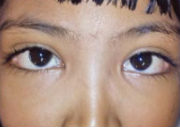iSHOCK
Condition of severe impairment of tissue perfusion leading to cellular injury and dysfunction. Rapid recognition and treatment are essential to prevent irreversible organ damage and death
Common CAUSES
Oligemic shock
Hemorrhage
Volume depletion (e.g., vomiting, diarrhea, diuretic overusage, ketoacidosis)
Internal sequestration (ascites, pancreatitis, intestinal obstruction)
Cardiogenic shock
Myopathic (acute MI, dilated cardiomyopathy)
Mechanical (acute mitral regurgitation, ventricular septal defect, severe aortic stenosis)
Arrhythmic
Extracardiac obstructive shock
Pericardial tamponade
Massive pulmonary embolism
Tension pneumothorax
Distributive shock (profound decrease in systemic vascular tone)
CLINICAL FEATURES:
Hypotension (mean arterial bp <60 mmHg), tachycardia, tachypnea, pallor, restlessness, and altered sensorium.
Signs of intense peripheral vasoconstriction, with weak pulses and cold clammy extremities. In distributive (e.g., septic) shock, vasodilatation predominates and extremities are warm.
Oliguria (<20 mL/h) and metabolic acidosis common.
Acute lung injury and acute respiratory distress syndrome with noncardiogenic pulmonary edema, hypoxemia, and diffuse pulmonary infiltrates.
EXAMINATION:














